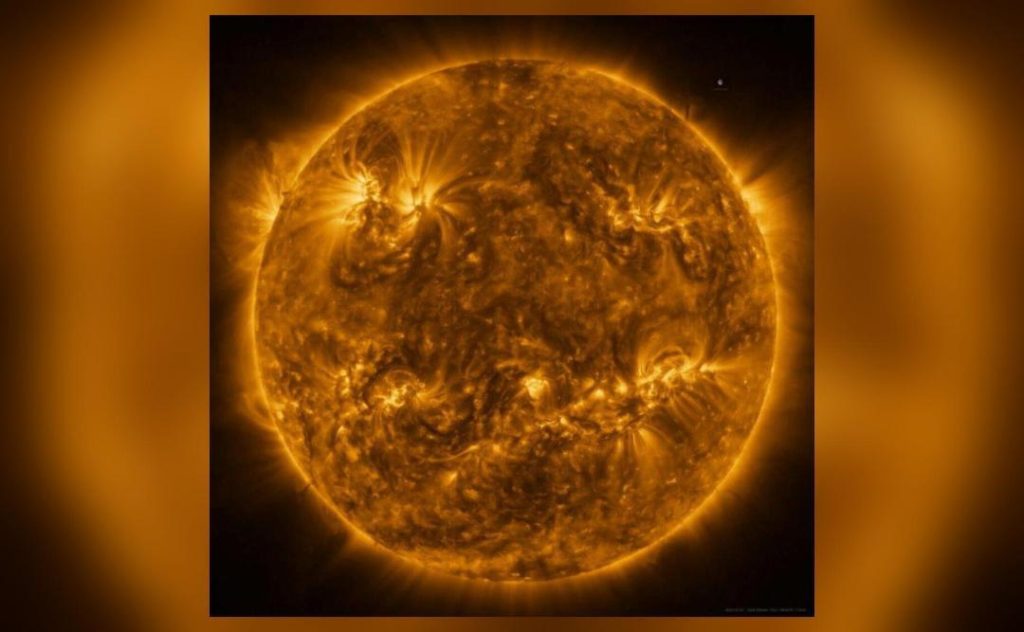
Solar Winds Could Create Water on the Moon’s Surface: NASA
The Moon, our celestial neighbor, has long been a subject of fascination and research for scientists and space enthusiasts alike. For a long time, it was believed that the Moon was completely devoid of water, with some research suggesting that it may have had water in the distant past. However, recent discoveries have challenged this notion, and NASA scientists have now made a groundbreaking claim that solar winds could be responsible for creating water on the Moon’s surface.
According to NASA, solar winds, which are streams of charged particles emanating from the Sun, could contribute to the formation of water on the Moon’s surface. These winds, primarily composed of protons (hydrogen nuclei), collide with electrons on the Moon’s surface, resulting in the formation of hydrogen atoms. These atoms then bond with oxygen in minerals like silica on the lunar surface, creating hydroxyl and water molecules.
This discovery has significant implications for our understanding of the Moon’s composition and its potential for supporting life. Water is a crucial component for life as we know it, and the presence of water on the Moon’s surface opens up new possibilities for future human exploration and habitation.
So, how exactly do solar winds create water on the Moon’s surface? The process begins with the solar wind, which is a stream of charged particles emanating from the Sun. These particles are primarily composed of protons, which are the positively charged particles that make up the nucleus of an atom. When these protons collide with electrons on the Moon’s surface, they form hydrogen atoms.
Hydrogen atoms are highly reactive and tend to form bonds with other atoms to create more stable molecules. On the Moon’s surface, these hydrogen atoms bond with oxygen in minerals like silica, creating hydroxyl (OH) and water molecules. This process is known as hydrogenation, and it is a common mechanism for creating water on other celestial bodies, such as comets and meteorites.
The discovery of water on the Moon’s surface is not a new one. In 2009, NASA’s Lunar CRater Observation and Sensing Satellite (LCROSS) mission detected water vapor in the plume of debris kicked up by the impact of a rocket stage on the Moon’s surface. However, the origin of this water was unclear, and scientists were unsure whether it was the result of comets or meteorites impacting the Moon’s surface.
The new research, published in the journal Nature, suggests that solar winds are the primary source of water on the Moon’s surface. This raises new questions about the Moon’s composition and its potential for supporting life. If solar winds can create water on the Moon’s surface, it is possible that other celestial bodies, such as asteroids and comets, could also be capable of supporting life.
The implications of this discovery are significant for future human exploration and habitation of the Moon. Water is a crucial component for life as we know it, and the presence of water on the Moon’s surface opens up new possibilities for future human settlements. The ability to extract water from the lunar surface could provide a reliable source of life support for astronauts, as well as a resource for propulsion and other purposes.
In conclusion, NASA’s discovery that solar winds could create water on the Moon’s surface is a groundbreaking finding that has significant implications for our understanding of the Moon’s composition and its potential for supporting life. The process of hydrogenation, in which solar winds create hydrogen atoms that bond with oxygen in minerals, is a common mechanism for creating water on other celestial bodies. This discovery opens up new possibilities for future human exploration and habitation of the Moon, and provides a promising avenue for further research and discovery.






